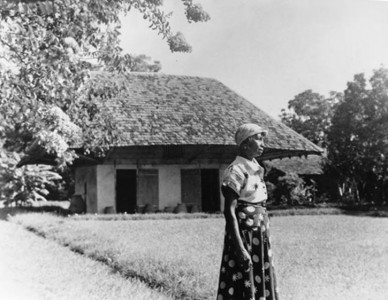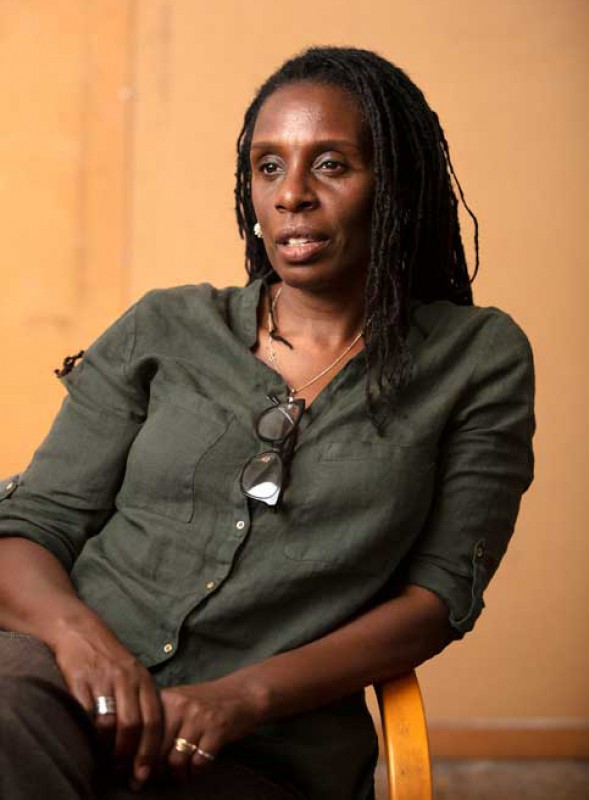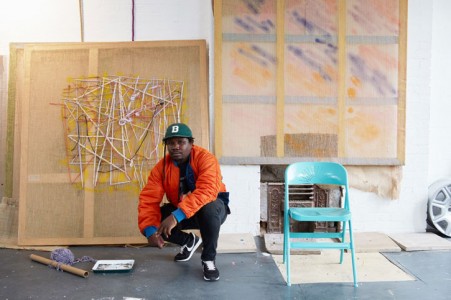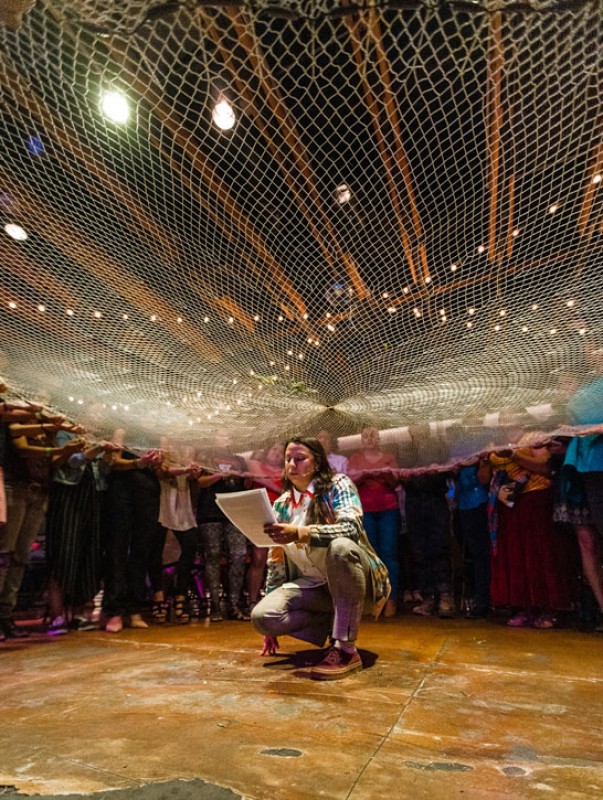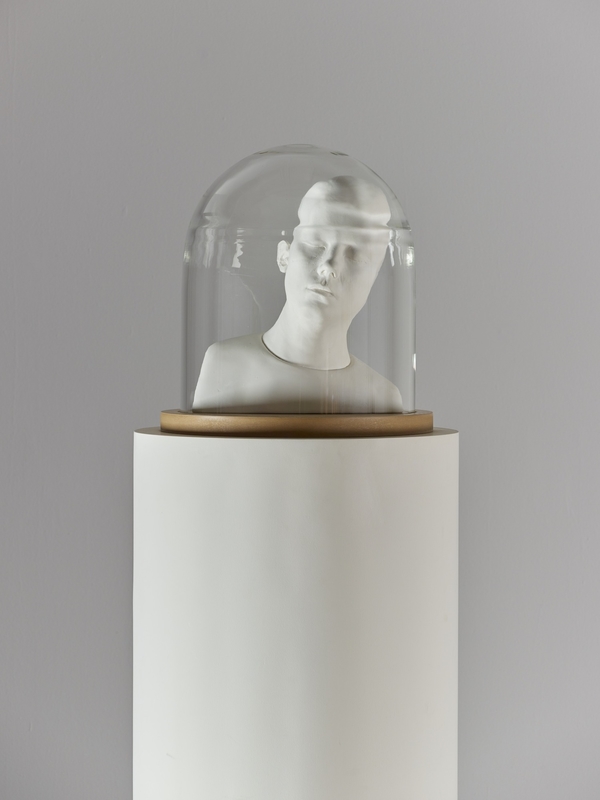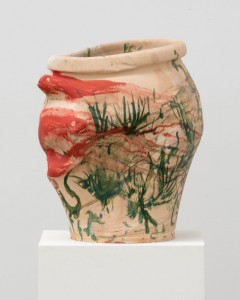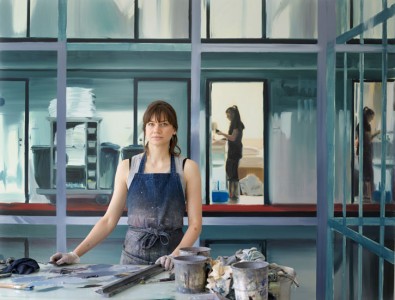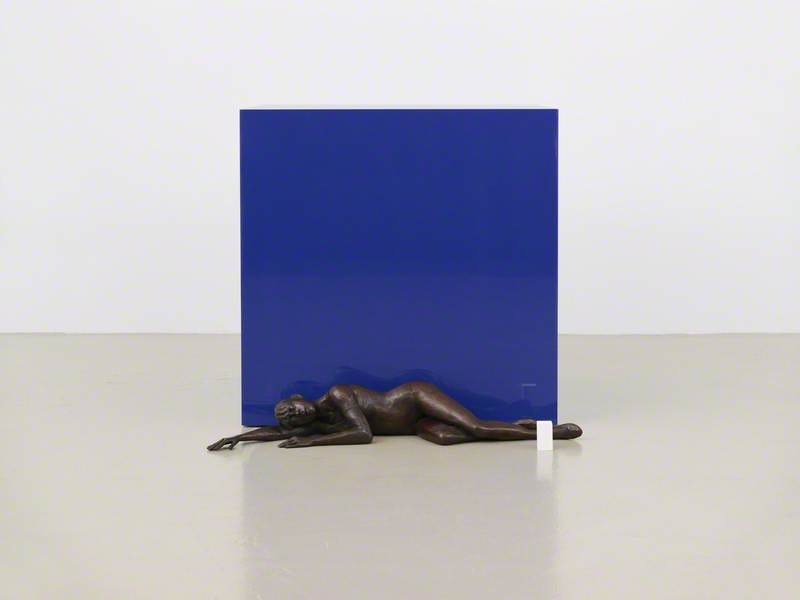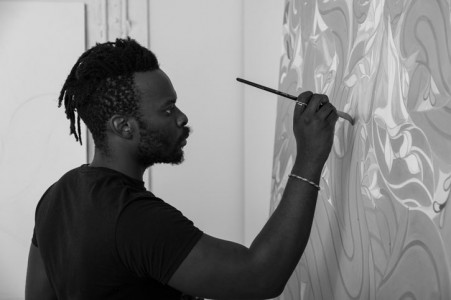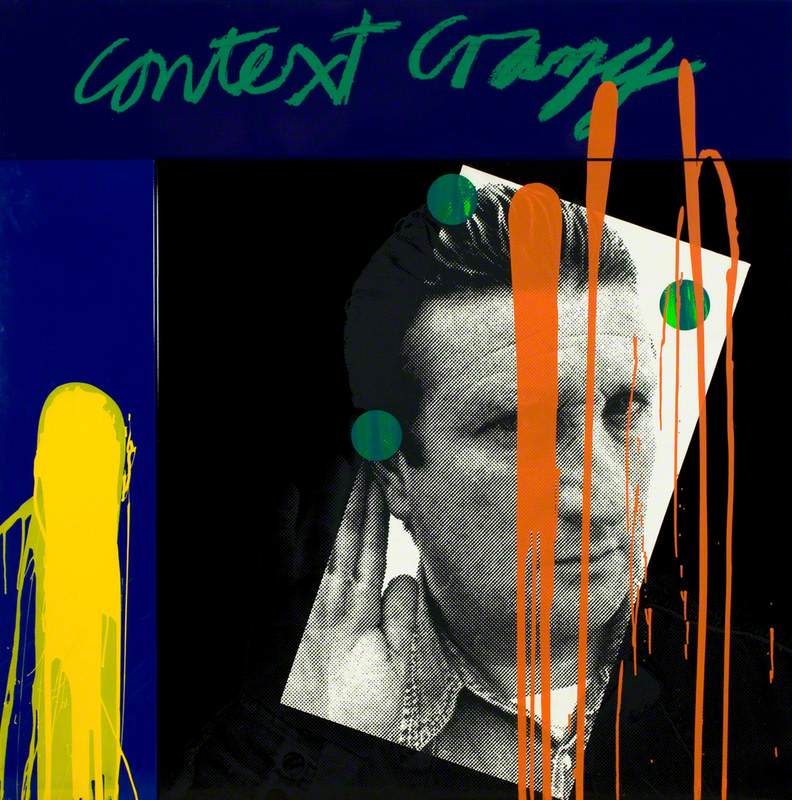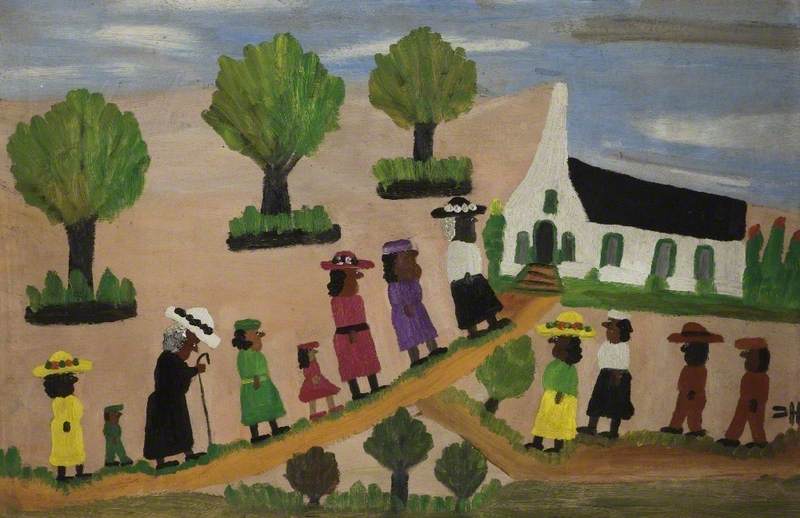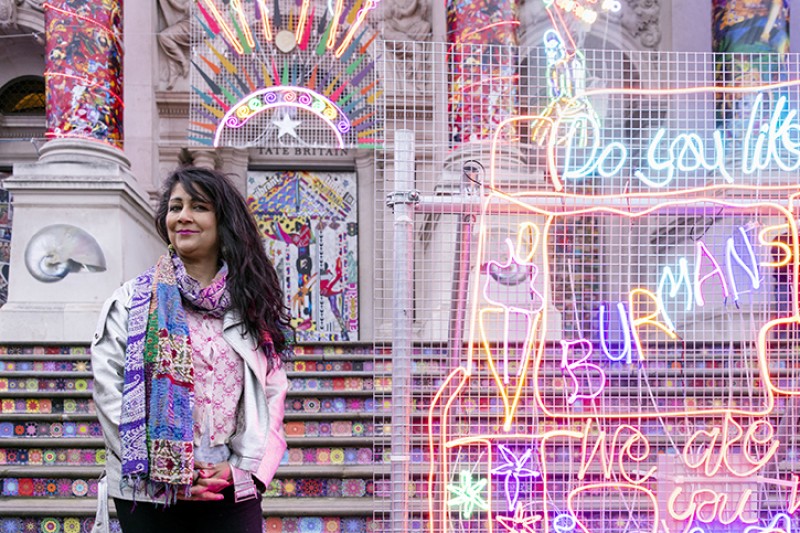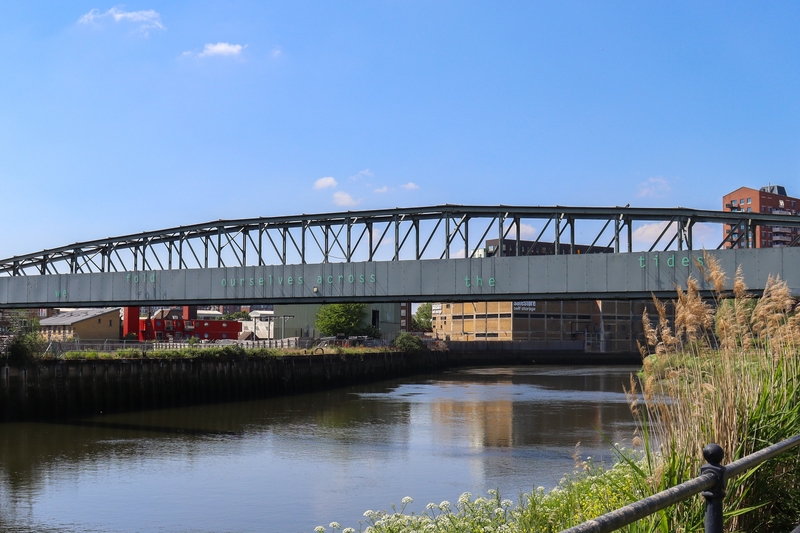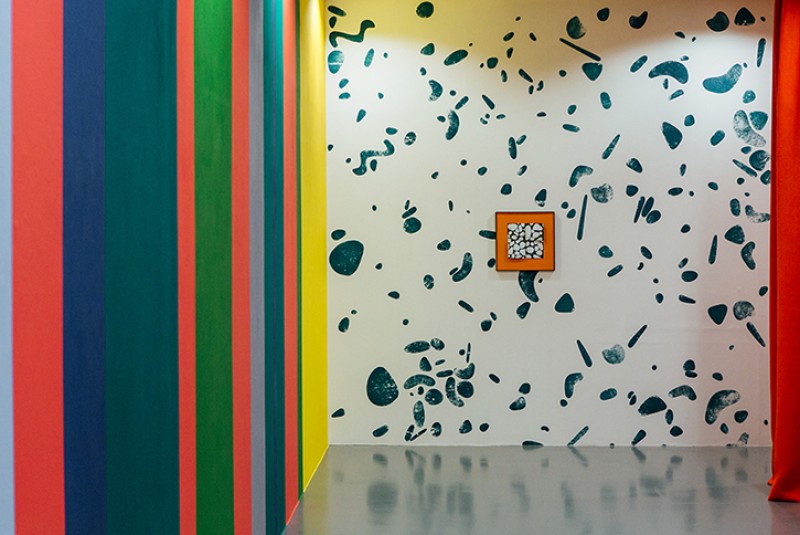In the series 'Seven questions with...' Art UK speaks to some of the most exciting emerging and established artists working today.
Tschabalala Self is having something of a moment – her work is currently on view across both of Pilar Corrias's London spaces, Avant Arte has put her first public art commission up in Coal Drop's Yard and released two limited edition prints with the artist – only it's not just a moment. Self has been making waves in the art world even before she completed her MFA at the Yale School of Art in 2015.
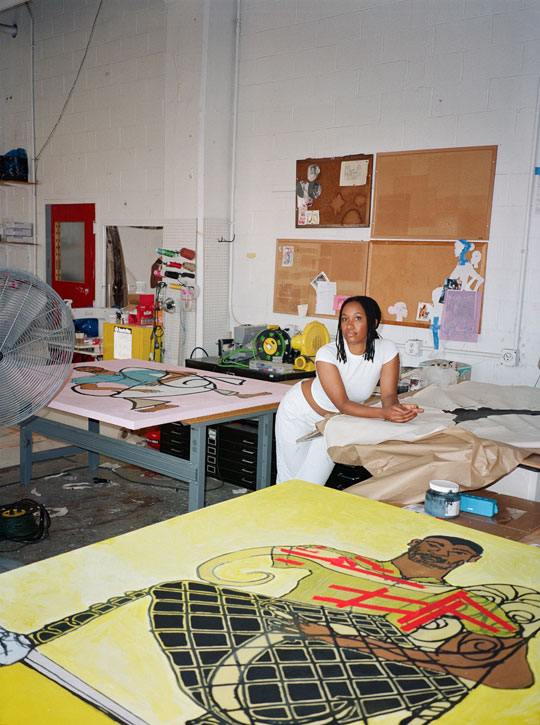
Image credit: Christian De Fonte, courtesy of Pilar Corrias, London
Tschabalala Self in her studio, 2022
The New York-based artist's most recent work centres on portraits of unnamed sitters to explore the significance of the home. She references and challenges the fantasies surrounding the radicalised and gendered body through painting, appliqué works and sculpture. Her latest work raises questions about the act of sitting and how such a simple act can take on unspoken political meaning. Art UK sat down with the artist to talk about her current exhibition in the UK.
Julia DeFabo, Art UK: You've talked about the influence of your mother and the community of women who raised you. How does that manifest in your practice?
Tschabalala Self: It's primarily through the protagonists in the work. The characters in my paintings are female figures for the most part. I'm thinking about various women in my life and those I have encountered, either personally or casually. They kind of become the archetypes for the subjects of the work.

Image credit: Pilar Corrias, London
Installation view of 'Home Body'
Outside of that, these women influence my sensibility, the gaze that I'm trying to cultivate for my viewer and the materiality of the work. A lot of the formal aspects of the work, it being tethered to craft traditions and sewing, those are all ways in which my work is very much connected to a feminist worldview and a womanist perspective.
Julia: Who, or what else, inspires your work?
Tschabalala: I would say Faith Ringgold as well as other artists like Romare Bearden, Jacob Lawrence, Nancy Spero, Bill Traylor and Clementine Hunter. These are artists that first come to mind, and who I think about quite a lot when in the studio.
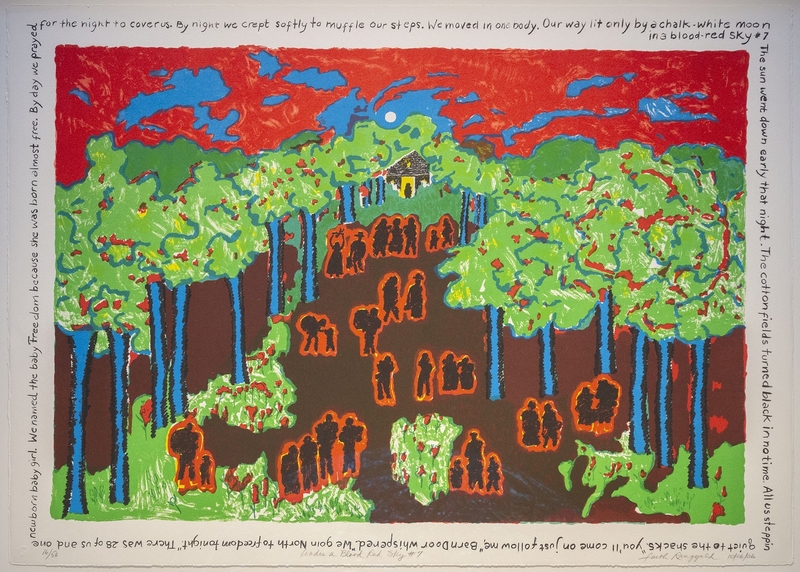
© ARS, NY and DACS, London, Courtesy ACA Galleries, New York 2025. Image credit: The Women’s Art Collection
Coming to Jones Road: Under a Blood Red Sky #7 2006
Faith Ringgold (1936–2024)
The Women’s Art CollectionWith all these artists, there is a certain kind of effortlessness that makes the final product look like it wasn't composed by one individual, that it just exists, like any other organic object. I'm really drawn to works that convey that kind of organic earthiness, whether in music, films, fashion or writing.
Julia: How does the installation of your work factor into the experience of an exhibition?
Tschabalala: I like to build environments around the paintings so that they're seen within the context of themselves. I'm trying to create a meta experience where the viewer enters into a space that is completely named by the artwork. It's always an attempt to dissolve this idea of the white cube, exhibition space, or institution, and instead create an intimate space where the artwork takes priority.
All the aesthetics and environments are borrowed from the paintings themselves. A lot of times there's an aesthetic of collage, of repetition and pattern. Those become the general elements that are the foundation of the installation.

© the artist. Image credit: Pilar Corrias, London
Somber
2022, fabric, acrylic & thread on canvas by Tschabalala Self (b.1990)
Julia: The exhibition's title, 'Home Body', alludes to the private space of the home and is a play on words, alluding to someone who prefers a night in, rather than a night out. I sometimes feel like we, as the viewers, are interrupting these figures' personal moments. Are we welcome visitors? Or are we intruders in this personal space?
Tschabalala: Well, it's kind of a mock home that's more analogous to the kind of home you would see in a play. It's more of a set. It's ostensibly the home of the subjects, but also a metaphor for everyone's home. In that way, I feel like it's a welcoming environment for others. The viewer isn't necessarily an intruder, but I would definitely say that they're a voyeur. If you think about it as being a set, the viewer occupies a fourth wall within that set. So they're there, but not necessarily interacting with anyone or anything that's happening there. They're just there to watch.
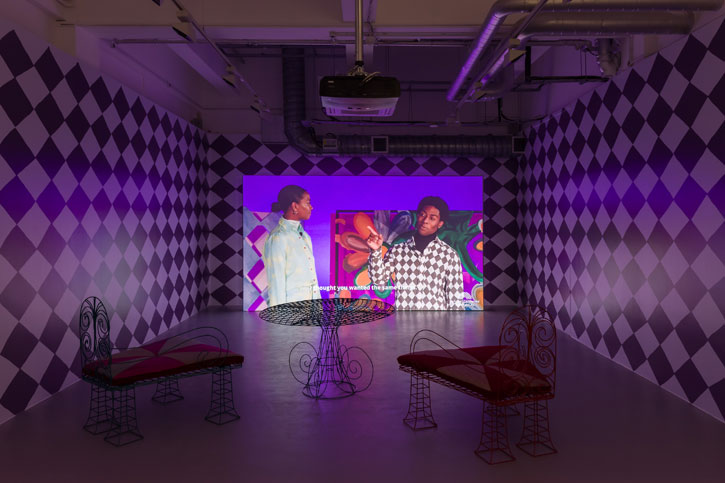
Image credit: Mark Blower, courtesy of Pilar Corrias, London
Installation view of 'Home Body'
Julia: Sitting is a theme you often revisit. But what does this subject mean to you?
Tschabalala: I've been thinking a lot about sitting and chairs. If you see a chair by itself, unoccupied, it still implies a figure. A chair itself is almost figurative, but at the same time, it's inanimate. I want to explore the idea of something being inanimate, or animated, in the context of the home. Can people take on these kinds of identities within the home? Can objects become personified?
I'm grappling with all these various questions and, the chair is very universal. Universality becomes somewhat neutral. It can be presented as a neutral object because everyone has an association or understanding of it that is relatively depoliticised. But because it seems so every day, I think it's a great opportunity to also extract more political or symbolic meanings out of the object.
The paintings that feature a chair – and especially the sculpture that shows a figure sitting on a chair – all deal with this idea of the personal and the political. The public art project in Coal Drops Yard entitled Seated shows a grand woman, sitting in a public space. I think to show a woman, especially a Black woman seated and taking up space in a relaxed manner, takes on a more significant social meaning. I've come to realise that despite the quotidian nature of the chair, it's actually quite a loaded object.

Image credit: Sergio Gutierrez
Performa
2021, performance by Tschabalala Self (b.1990)
Julia: The commission from Avant Arte is on view at Coal Drops Yard in London until early 2023. Could you explain the process of creating your largest sculpture to date and your first public sculpture?
Tschabalala: A lot of my works in general are about a transmutation of objects and materials, like when I use fabric in my appliqué works, I'm making fabric into a painting. And in painting, I'm looking at a three-dimensional object or figure and flattening it. So in this sense, it can be like working in reverse.
The sculpture is modelled after a two-dimensional work, a drawing that I had done maybe a year prior. In making that sculpture, I wanted to turn the drawing into a three-dimensional work. I was looking at my own flattened geometry and trying to bring it back into a figure, which is exciting because I think I was able to create a new kind of language within my figuration. It's a figuration that has a lot of illogic or the nonsensical decision-making that exists in the flattened figures.
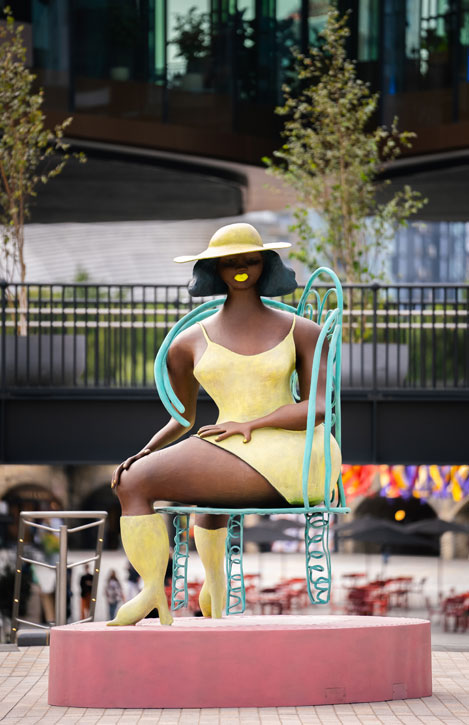
© the artist. Image credit: Lucy Emms, courtesy of Avant Arte
Seated
2022, sculpture by Tschabalala Self (b.1990)
Julia: When do you feel most creative, and how do you harness that creativity?
Tschabalala: I feel the most creative when I've already been working for a long period of time. My process is about momentum. I'll have moments of rest and contemplation, then I'll work in sprints. When I'm towards the end of the sprint, and near exhaustion, I get to this point where I think I'm almost on autopilot. That's when I'm able to make a lot of exciting work. I'm working without over-intellectualising a lot of my decisions. It's almost a frenzy. It's not comfortable to be in that moment, but in retrospect, it's quite productive in terms of my output.
Julia DeFabo, Social Media Manager at Art UK
'Tschabalala Self: Home Body' is on view at Pilar Corrias until 17th December 2022. Her sculpture Seated is on view at London's Coal Drops Yard until early 2023.

